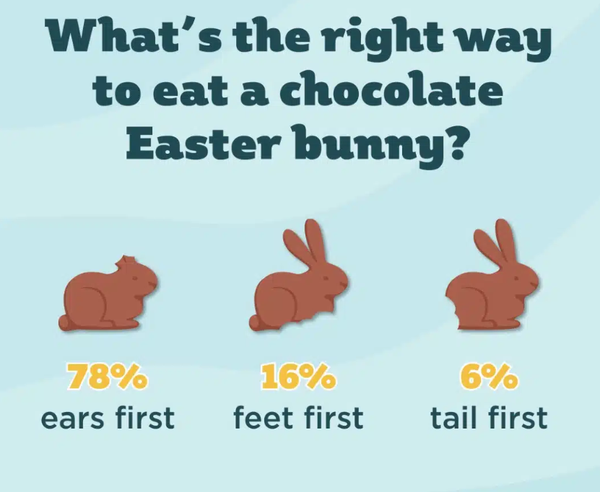
Americans haven’t soured on their love of
chocolate and candy, but they are slightly more cautious about spending on such treats.
The National Confectionery Association (NCA) recently released its “State of Treating 2024”
report, finding sales totals reached a record of over $48 billion in 2023, driven primarily by inflation -- which the group also cited as a factor in declining unit and volume sales figures.
Sales by volume decreased by 4.4% in the chocolate category, and 1.1% in the non-chocolate candy category. Gum and mint sales saw improvements across dollar sales, units, and volume sales, the
group noted, but have yet to rebound to pre-pandemic levels.
Americans are still buying plenty of candy, though -- almost 99% made purchases in the category last year, making an average of 35
such purchases in the year.
advertisement
advertisement
“Our new research shows that, even when faced with unpredictable environmental shifts and changes, consumers feel a strong connection to chocolate and candy
– and they embrace classic favorites and innovative novelties with an emotional drive that keeps the category fresh and vibrant,” National Confectioners Association president and CEO John
Downs said in a statement. “Consumers seek out chocolate and candy to help enhance holiday seasons, family celebrations, and those important ‘treat yourself’ moments.”
The report delves into consumer behaviors as well, drawn from an online survey representing a national sample of 1,556 consumers aged 18-75. Unsurprisingly, cost is a primary concern in purchasing
decisions, with price cited as the number one purchase consideration factor by consumers: 30% listed it as the top factor, and two-thirds listed it among their top three factors.
“Promotions are powerful, bringing high incrementality to all confectionery segments, especially during the seasons,” the NCA wrote in the report.
Brand was the number two
purchase consideration factor among consumers, but there were considerable discrepancies across generational cohorts, with younger consumers far less brand -loyal. While 69% of goomers, and 61% of Gen
X, consumers listed “brand” as a top three factor, only 45% of millennials and 32% of Gen Z respondents did.
Millennials (20%) and Gen Z consumers (22%) were also over twice as
likely to cite “sustainability” as a top three factor as boomers (9%), and were more likely to place emphasis on “nutrition” and “mood” than older generations.
Consumers listed “Brand’s commitment to fair pay and health & safety of their workers” as the most important brand sustainability commitment, with nearly two-thirds of
consumers citing it as either a purchase priority (31%) or tie-breaker (34%). Brands have opportunities to reach younger consumers with sustainability messaging on social media, with 47% of Gen Z and
41% of millennials listing social media platforms as their preferred format to learn about brand commitments.
The report arrives ahead of an early Easter holiday – one of the most
important sales seasons for the industry, Easter did come out ahead of Valentine’s Day for percentage of overall 2023 candy, mint and gum sales (CMG) according to the report: the holiday
represented 15.1% of 2023 sales totals, compared to the February holiday’s 13.5%.
The NCA anticipates the Easter holiday will generate over $5 billion in sales this year. The group also
shared consumer preferences around how to eat an Easter bunny, finding that 78% eat the ears first, compared to 16% who start with the feet, and 6% who go straight for the tail.